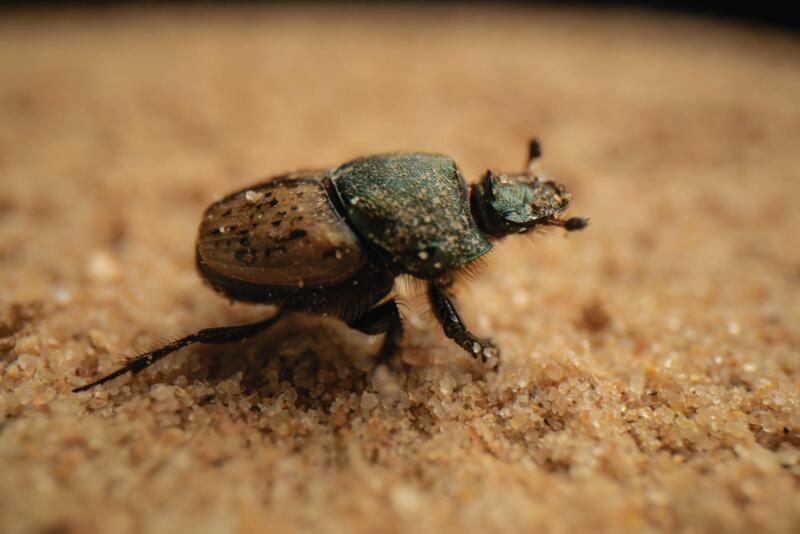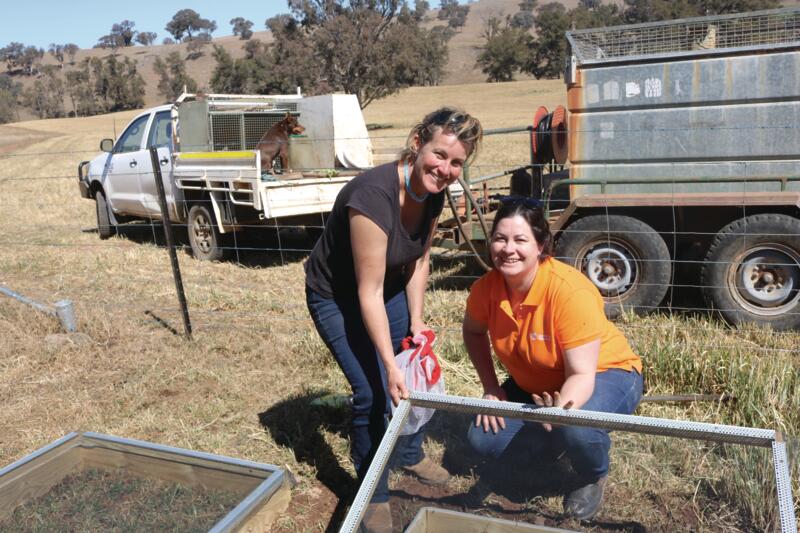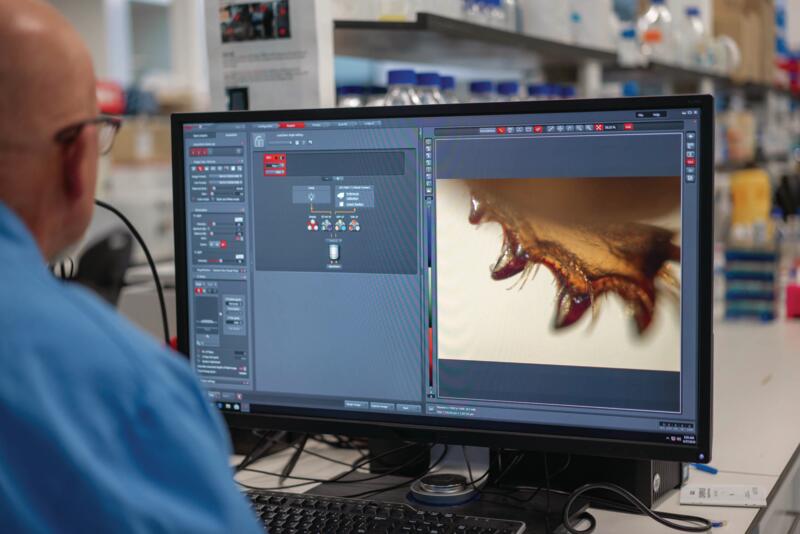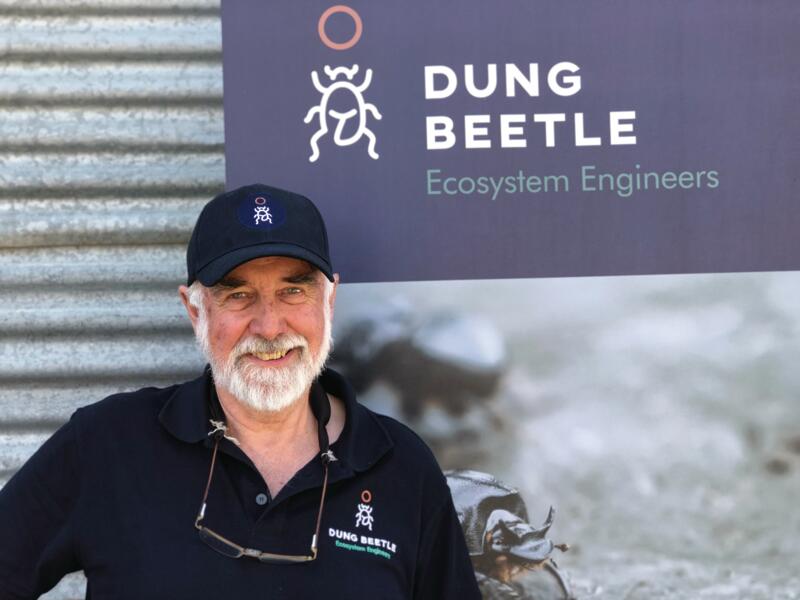THE arrival of 6,000 very special dung beetles at Charles Sturt University marks a milestone in a program designed to turn the 80 million tonnes of dung produced by Australian livestock each year into millions of dollars of benefits for farmers.
The Dung Beetle Ecosystem Engineers (DBEE) program, a five-year national research effort led by Meat & Livestock Australia and backed by the government, aims to introduce three new overseas dung beetle species to livestock properties, to assist producers. The species have been specifically chosen to fill seasonal and geographic gaps in the distribution of the dung beetles that have already been introduced across southern Australia.
Researchers say the latest batch of Moroccan Onthophagus vacca dung beetles, which have been bred in laboratories at the university’s Wagga Wagga campus, will be introduced to at least 100 new, species-appropriate sites, with dung beetle advice and training provided for producers.
It is necessary to import dung beetles – while there are hundreds of Australian dung beetle species, these prefer native animal dung, which is dry and pelleted. The imported species specialise in the burial of cow and horse pats and sheep pellets. The breaking up and burying of these livestock droppings, which the beetles both eat and breed in, offer a raft of benefits.
RELATED ARTICLES:
New saltbush supplement shows promise for farmers in drought
Insects in overdrive: how dung beetles are helping farmers
Insect ecology expert and theme leader of
the program Professor Geoff Gurr says it’s a long and complex pathway from importation to final release.
 Professor Geoff Gurr, leads the DBEE project and says it’s a long process from importing the beetles to releasing them.
Professor Geoff Gurr, leads the DBEE project and says it’s a long process from importing the beetles to releasing them.
“When they arrive in Australia from overseas, the insects are required to stay for the term of their life under strict quarantine conditions. The only thing that can come out of quarantine are the eggs and these are required to go through an exhaustive sterilisation phase.”
The sterilised eggs are then grown in a CSIRO facility, before the adult beetles are delivered to Charles Sturt and other locations for mass breeding.
The new generation beetles will be introduced into testing sites in South Australia, and if successful, they will be brought to other states, including NSW. The specially bred dung beetles will gradually be made available to larger numbers of livestock producers in coming years.
Imported dung beetles destined to help NSW farmers
 The Moroccan Onthophagus vacca beetle will soon be heading to Australian farms.
The Moroccan Onthophagus vacca beetle will soon be heading to Australian farms.
Ahead of the arrival of the Moroccan dung beetles onto NSW farms, a batch of French beetles of the same species, Onthophagus vacca, are already on trial in our state.
According to Dr Bernard Doube, theme distribution leader for the DBEE program, two farms in NSW are now home to ‘farmer nurseries’.
RELATED: Kicking up a stink: What’s bugging our biosecurity experts?
The volunteer farmers, Sally Kirby from Molong in the Central Tablelands, and Lindsay Johnston, who farms at Old Bonalbo on the North Coast, have been recruited via their work with Landcare. The specially-created nurseries on their farms feature two different types of constrained dung beetle housing – one involving cages in the field, and the other a growing system under large sheets of shade cloth.
 Molong farmer Sally Kirby, with DBEE’s Annie Johnson, setting up a trial beetle nursery on her property.
Molong farmer Sally Kirby, with DBEE’s Annie Johnson, setting up a trial beetle nursery on her property.
Dr Doube says a key aim of the trial is to find a cheap and efficient way of mass-producing the beetles on farms. “So if one of the farmers does well and the 50 beetles they’ve started with eventually become 5,000, that would be a magnificent result,” he says. The arrangement with the producers is that a proportion of the beetles will be released on their farms, with others used to start mass-rearings across the state.
Much depends on the data that will be collected from the trials across the next 20 months, but it’s hoped that the French dung beetles might be established in large numbers in six or eight years, while previously that kind of coverage has taken 20 to 30 years. Further releases in NSW will depend on the results of the trials.
_preview.jpg) Geoff Burgess at the Charles Sturt University dung beetle breeding facilities in Wagga Wagga, checking on the progress of the brood balls.
Geoff Burgess at the Charles Sturt University dung beetle breeding facilities in Wagga Wagga, checking on the progress of the brood balls.
All dung beetles suffer in drought, Dr Doube says, and they are keen to trial the performance of the Moroccan Onthophagus vacca beetles alongside the French strains in the field, as it’s thought the African-origin beetle will adapt better to dry conditions. “This is not proven yet, but it’s believed that coming from Morocco will enable this beetle to colonise a much wider range,” he says.
RELATED: Regenerating the land with a strong drought-proofing tool
This is important in NSW, which geographically has a large number of climates. “Different dung beetle species will adapt to different climates,” he says. “In the west and north west of NSW, where it’s dry and hot, there are a couple of dung beetle species that can live in arid zones. On the coast there might be a dozen species.”
 Dr Paul Weston of the DBEE project examining a beetle through a microscope.
Dr Paul Weston of the DBEE project examining a beetle through a microscope.
Surveys carried out as part of the DBEE project looking at the current distribution of species will help assess which types will prosper in each environment, and identify the gaps. As different species are active during different seasons, for example winter active or spring active, there can also be gaps in beetle action during the year.
RELATED: Maggots: The livestock feed no-one saw coming
 Dr Bernard Doube says that so far, feedback from farmers involved in the trials has been fantastic.
Dr Bernard Doube says that so far, feedback from farmers involved in the trials has been fantastic.
“Farmers are stoked. They have been sending me photos within the first week, proving that the dung beetles are active in the cages.”
He is currently setting up a register of farmers who would like to take part in future dung beetle trials, which work with cattle, sheep and horse dung. Interested livestock producers should send an email to
[email protected], with details of their location and soil type.
Case study: Riverina cattle producer highlights the benefits to farmers
Video produced by Matt Beaver.
Riverina farmer Phil Davis raises up to 400 head of cattle across three properties, totalling 1,000 hectares. These include his uncle Tony Craig’s farm in Tarcutta, which he manages and is being used as part of the DBEE monitoring and research program in the area. Phil says the farm has had dung beetles for at least ten years.
“They just occur naturally,” he says. “They bury the manure, which creates organic soil matter. They aerate the soil and make pastures more palatable because there are no large dung heaps left on the ground.”
- 50 species of dung beetle have so far been introduced to Australia by the CSIRO.
- 5-10 years needed from dung beetle release to achieving extensive dung burial.
- 27% increased pasture growth in South Australia over a two-year period attributed to imported dung beetles.
- 3,000 bush flies can be produced in a fortnight in just one large cow pat.
- 23 species have established.
- 12 The number of pats that cattle can lay each day.
The dung beetle researchers need your help on-farm
As part of the project, researchers would like your help in mapping existing dung beetle distributions on your property. To report your observations, download the app, MyDungBeetle Reporter, on your smartphone. For more information, visit
dungbeetles.com.au.